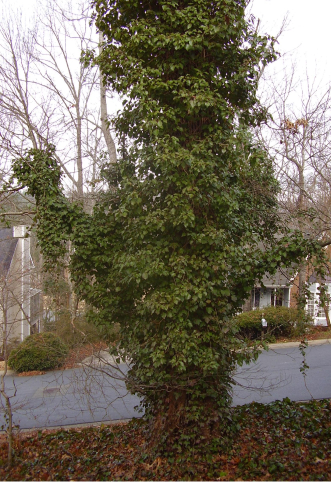As rainwater flows across our yards, patios, parking lots, and other hard surfaces, water picks up oil, pet waste, fertilizer, sediments, and other pollutants. Rain gardens are a stormwater capture system whereby a garden is used to slow and absorb runoff from storms. This “bioretention” system uses native plants to filter contaminants from runoff before they reach water bodies or flood areas. Rain gardens can either be small backyard installations or large industrial open areas, based on the needs and limitations of the site. They benefit residential areas by reducing flooding and pollution. Rain gardens are also important for their ability to manage erosion. When stormwater rushes down a slope without plant coverage, it can damage topsoil. In this activity, we will ask you to interpret pictures and identify plants native to Georgia that could be used in rain gardens. This is an in-class or at-home activity.
Environmental and civil engineers consider the benefits of increased infiltration when trying to reduce flooding. Carefully planned rain gardens make proper use of native plants, creating healthier landscapes with pollinator habitat. During this activity, students will learn a few of the many native plants used in Georgia rain gardens, as well as some invasive species.

Ask students to describe gardens that they have observed before. Next, ask them to guess what a rain garden might be. As an optional addition to this lesson, instructors may want to re-introduce the parts of a plant with special emphasis on roots to hint at what a rain garden may do. Explore a map of the school grounds before part two. Discuss the connection to infiltration; that is, what happens to water when it enters the soil instead of rushing down streets.
This activity has two parts; the first only requires the attached handout.
For part two, each group of students will need:
As an extension of this activity, once there is a rain garden on site, modify part two to observe the plants, birds, and insects that they see.
Which photos are of a rain garden? Circle Your Answer




Well-adapted non-native plants are not as beneficial as native plants, but they are not harmful to ecosystems and can have some benefits, like aesthetics or helping other species.
Invasive species, also known as exotic, nonnative, or introduced species, are plants and animals that have been introduced, either intentionally or accidentally, into areas outside their natural ranges and cause economic or environmental harm. Invasive species take up space and resources from native species, harm or overwhelm them, and promote monocultures, or a lack of diversity in the environment. These species are capable of having a negative effect on Georgia’s economy, natural environment, or human and animal health. Kudzu is one example of an invasive species in Georgia.

These invaders consist of plants, insects, mammals, birds, reptiles, amphibians, crustaceans, and fish. They are harmful because they have fewer limitations to their growth in the new environment, causing overpopulation. Invasive plants kill native species by blocking sunlight, absorbing nutrients, or exhausting water supplies. Because of the potential negative impacts that can result from invasive species, it has become an official public goal in Georgia to reduce the environmental and economic damage caused by harmful, non-native species.


Engineers attempt to avoid this negative effect by introducing carefully researched, native, or at least non-invasive, species into a rain garden.